-
- As global trade flows and relationships shift, what are the impacts on market participation and access? What economic opportunities are emerging?
- How do unstructured short-term changes impact regional food security, and how can we build more agile local supply chains able to absorb and adapt to shocks?
- How can we anticipate and prepare for structural long-term changes, and what future-proofing strategies are governments, corporates, and investors implementing to address systemic challenges like climate change, resource scarcity, and demographic shifts? What role does technology play in these approaches?
ChairpersonSpeakers
-
- How are global economic shifts impacting regional agricultural systems, and how can agri-food businesses realise emerging growth opportunities to stay ahead?
- Join a leading economist as they unpack the latest data, risk signals, and regional forecasts shaping the resilience and competitiveness of the agri-food sector in China and across Asia-Pacific.
-
- As supply chains reorganise, how are investors identifying and backing transformative technologies that can unlock new pathways for resilient agri-food futures?
- From venture capital and growth equity to sovereign wealth funds, what do current capital flows looks like, and how they can they be leveraged to accelerate innovation, de-risk deployment, and maximise impact?
- What models of collaboration between capital providers and technology developers are proving most effective in scaling these solutions across borders?
-
- How are CPGs tapping into new opportunities emerging from changing economic dynamics, and how are their innovation pipelines evolving in line with supply chain reorganisation and demographic shifts?
- What strategies and initiatives tailored to diverse markets in Asia-Pacific are future-proofing procurement, manufacturing, and distribution systems?
- How can corporates, governments, and the broader innovation ecosystem work together to build resilient value chains poised for sustainable growth?
-
- As the global economic and trade landscape changes, how are alliances between countries in Asia-Pacific and across the world being reshaped? Where do the opportunities for new multi-stakeholder and public-private partnerships lie?
- What mechanisms and frameworks are needed to support cross-border partnerships, and how can these models align government policy, industry expertise, and innovation capital to de-risk, scale up, and disseminate regionally relevant solutions at every stage of the value chain?
- How can regional and global agri-food networks build trust and ensure transparency? What are the roles of emerging technologies and data sharing?
-
Delegates will take a networking coffee break.
-
Fireside Chat // Food Security: What Are the Tools and Partnerships Delivering Accessible Nutrition?
- How is the agri-food industry addressing prevalent malnutrition challenges across the region? Which approaches are proving most successful, and how are these approaches evolving around shifting trade flows?
- How can government and industry work together more effectively to increase the accessibility and affordability of healthy and sustainable diets?
- How is regulation driving or hindering progress, and which new policy tools are addressing bottlenecks across the supply chain in Asia-Pacific’s fragmented market?
-
Hosted by:

AI has the potential to transform every facet of the agri-food value chain, unlocking new opportunities to drive both productivity and sustainability. At the same time, it is hard to separate the signal from the noise. As the technology continues to advance rapidly, agri-food executives are grappling with 3 key questions:
- Where are the most compelling use cases for my business?
- What is the investment case?
- How do I orchestrate the transformation?
In this session, Bain & Company brings together leaders and innovators from across the food value chain to explore these questions and discuss the high-impact opportunities to improve performance and competitiveness with AI.
-
This session shares practical insights from real-world applications at the intersection of food innovation, behavioural science, and business strategy. By integrating advances in bio-manufacturing and product development with evidence-based understanding of consumer motivations, we can design solutions that accelerate adoption across both B2B and B2C markets.
The presentation highlights how cross-sector collaboration among startups, scientists, industry leaders, and policymakers can translate scientific and technological progress into sustainable consumer behaviours. Through this convergence, we aim to make healthy and sustainable food choices more accessible, appealing, and commercially viable - driving broad-based impact on environment and consumer well-being.
-
- Looking at long-term strategies for encouraging healthier diets, what is the impact of policy changes, public health concerns, and evolving consumer expectations on the food industry?
- How are F&B and ingredient brands reformulating products to navigate these shifts, and what is the role of science and technology in accelerating R&D in functionality, nutritional value, and sensory parameters?
- How is the innovation ecosystem collaborating to catalyse and scale new ingredient and food solutions in a fragmented market?
-
Delegates will take a networking lunch break.
-
- How is AI-driven R&D in gene editing and breeding accelerating breakthroughs in key regional crops such as rice, oil palm, fresh produce, and specialty varieties?
- How is the innovation ecosystem navigating regulatory headwinds across key regional crops from rice to fresh produce?
- Join us for an interactive discussion with live tasting, exploring the regulatory, commercial and investment strategies needed to bring next-generation ingredients to market and strengthen food and nutrition security across the region.
Speakers -
- As the global trade landscape evolves and the climate crisis accelerates, how are countries in Asia-Pacific strengthening their relationships and networks with other regions including Latin America and Africa? What is the role of BRICS countries in South-South cooperation and championing agri-food transformation?
- What are the strategic objectives central to these partnerships, and how are public and private stakeholders addressing them through the implementation of open and inclusive trading systems, climate change adaptation, and smallholder finance?
- Which mechanisms and programmes show positive outcomes, and how can these initiatives be further scaled and replicated across the Global South?
-
Hosted by:

- From novel ingredients to functional food products, many innovations stall between lab success and commercial scale.
- This breakout session explores how Singapore serves as a springboard for APAC growth - offering the ecosystem support, infrastructure, and regulatory environment innovators need to succeed.
- Startups, corporates, and investors will gain practical insights into how the Singapore ecosystem can help to overcome scale-up and commercialisation challenges - turning promising prototypes into market-ready solutions poised for success.
-
Join us for a high-energy start-up showcase of breakthrough innovation. In this pitching session, hand-picked early-stage start-ups from all areas of the agri-food value chain will take the stage.
-
After the pitches, stay in the room to join roundtable discussions hosted by leading investors, designed to spark meaningful conversations and potential partnerships.
Attracting Capital: How can Start-ups Align with Investor Expectations?
Nick Cooney, Managing Partner, LEVER VC, USAFood & Agtech Investment: How Can Investors Achieve Meaningful Returns and Measurable Impact?
Claire Pribula, MD, THE YIELD LAB ASIA-PACIFIC, SingaporeUnlocking Regional Growth: How Can Agri-Tech Innovators Scale Across Borders and Secure Local Support?
Tao Zhang, Co-founder, DAO FOODS, ChinaReimagining the Capital Stack: Who’s Financing the Leap from Pilot to Plant?
Phil Morle, Partner, MAIN SEQUENCE VENTURES, AustraliaUniting Corporates & Innovators: How Will Collaboration Define What’s Next?
Andrew Ive, Founder and Managing General Partner, BIG IDEA VENTURES, USAFuelling Transformation: How Can Blended Finance & Public-Private Partnerships Power the Next Wave of Agri-Food Tech Innovation?
Matilda Ho, Founder & Managing Director, BITS X BITES, ChinaChanging Terms: How Can Founders Manage Cap Tables During Volatile Times?
Thomas van den Boezem, Junior Partner, PEAKBRIDGE VC, NetherlandsCracking the Code on Exits: Which Principles and Models Create Lasting Value?
Marcus Remmers, Partner, Planetary Health Investments, NOVO HOLDINGS, DenmarkBuilding a Robust Base: How Can Asia–Pacific Cultivate a Thriving Ecosystem of Investible Ventures?
Maureen Bresil, Associate Director Ocean Asia , KATAPULT, Singapore
-
Delegates will take a networking coffee break, providing a chance to recharge while engaging in meaningful conversations.
-
- How are public and private stakeholders addressing cultural and socio-economic barriers to regenerative agriculture adoption in a fragmented smallholder market? What tools, programmes, and partnerships are proving successful, and how can they accelerate the transition long-term?
- What defines the technology stack, from precision agtech and biotechnology to MRV systems, for enabling regenerative agriculture in Asia-Pacific, and how does it differ from models in North America and Europe? How can it be further optimised to suit specific crops, farm sizes, and countries?
- What novel finance and incentive models are supporting farmers through the transition to expand the land under regenerative practices? How do these mechanisms adapt to different environments?
- From yield to soil health, what are the economic and environmental outcomes of regional regenerative agriculture programmes? What short-term targets have been achieved, and what long-term goals have been set?
Speakers -
Hosted By:

Join Mars Petcare and Big Idea Ventures for the grand finale pitching event showcasing the three finalists from the second iteration of the Next Generation Pet Food Program, in collaboration with AAK, Bühler, and Givaudan. The challenge targets startups working on novel ingredients, sustainable fats and proteins, and advanced processing technologies to create more sustainable, future-ready animal nutrition. Come prepared for a high-energy pitching session followed by interactive Q&A.
Chairperson
-
- As sustainable practices like direct seeding and alternative wetting and drying gain traction across Asia-Pacific, what measurable outcomes are we seeing on carbon and methane emissions?
- With these methods introducing new challenges around seed survival, weed control and disease management, how are innovative seed varieties, inputs, and precision technologies helping to boost yield, productivity, and farmer income?
- How can regional collaboration and trade be strengthened to connect stakeholders across the rice value chain in Asia-Pacific? What role do free-trade agreements, and intra and inter-regional networks play in building resilience?
-
- From AI-powered field manager platforms to integrated pest management, what works, what doesn’t work, and how can regional initiatives empower farmers and improve livelihoods?
- Hear directly from Japanese farmers about the realities of sustainable rice production in Asia-Pacific.
Chairperson
-
- With valuations reset, and no exits in sight, how are investors challenging the fundamentals of agri-tech and food-tech investment? What hard truths are behind what has gone wrong, and how are these insights reshaping today’s early- and growth-stage investment strategies?
- As the start-up landscape contracts and consolidates, how is the shift from point solutions to full-stack models influencing investment priorities and expected returns?
- What defines the current M&A environment in the region? Which buyout principles are front and centre, and how can entrepreneurs build them into their business models from day one?
- Is the IPO route still viable for agri-food innovators in Asia-Pacific? What do public markets conditions look like, and what should start-ups consider when shaping their long-term exist strategy?
ChairpersonSpeakers
-
 Following a busy day of networking at the summit, you are invited to relax and reconnect with industry colleagues and new faces over evening networking drinks.
Following a busy day of networking at the summit, you are invited to relax and reconnect with industry colleagues and new faces over evening networking drinks.
-
- How is Asia-Pacific’s agri-food ecosystem navigating evolving economic and environmental priorities, and which strategic objectives are guiding innovation pipelines?
- Which climate adaptation-focused tools and initiatives are delivering positive impacts across agriculture, food, and aquaculture systems? What results or trends are we seeing, and what learnings are being incorporated into future activity?
- Where do we see opportunities for multi-stakeholder and public-private partnerships, and how are policymakers, corporates and investors strengthening regional and global networks?
Chairperson
-
Temasek, in partnership with Oliver Wyman and Rabobank, present the next iteration of the Asia Food Challenge (AFC) report, analysing water resilience as a systemic challenge. Join us for an executive summary of the findings and proposed solutions, followed by an interactive fireside chat.
-
- With 75% of Asia-Pacific’s land experiencing water stress and agriculture responsible for 70% of freshwater withdrawals in the region, how can innovation turn constraints into catalysts to accelerate sustainable growth and livelihoods?
- Drawing on the findings of the Asia Food Challenge (AFC) report, which integrated solutions are delivering impact across agri-food systems? How are policy and financing mechanisms supporting their scalability?
- How are governments, corporates, investors, and start-ups, collaborating to de-risk and commercialise practical solutions? What impacts are emerging?
-
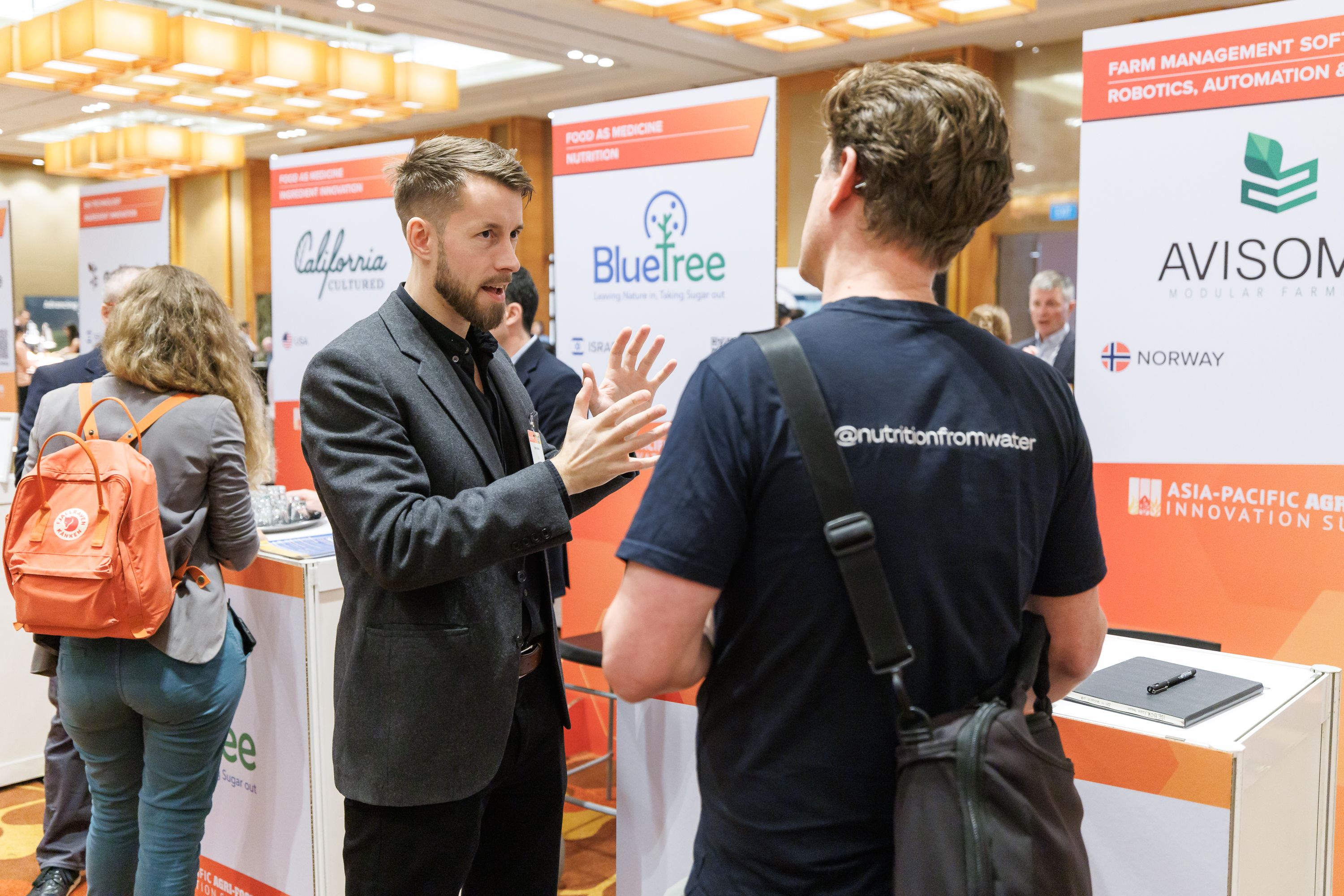
Startup Showdown: Who Are the Innovators Transforming Asia’s Agri-Food System?
New for this year! During the networking break, head over to the Networking Hub and discover new and developing talent. Start-up and Scale-up founders will take to the innovation stage to pitch bold ideas and share experiences, while you grab a coffee and connect with peers.
This session brings together a dynamic mix of startup pitches and scale-up case studies at the intersection of precision agriculture, carbon-smart farming, and biotechnology. Startups will present innovations ranging from AI-driven agronomic decision-making, biodiversity risk screening for ESG compliance, soil health sensing, and nature-based carbon credit creation, to gene-editing and microalgae production. The session continues with scale-up case studies focused on advancing precision agriculture through scalable data-driven platforms. Join us for a high-energy innovation showdown!
-
- With smallholders responsible for approximately 40 per cent of palm oil production in Asia-Pacific, and new regulations on deforestation and GHG emissions raising the bar for compliance, how can the agri-food industry build transparent, compliant, and smallholder-inclusive supply chains?
- From connectivity gaps and digital literacy to building trust, how can agribusinesses address smallholder farming challenges to implement sustainable practices and improve deforestation mapping? Which technologies designed with smallholders in mind are proving most effective?
- With traditional funding options often inaccessible for smallholders without land titles and collateral, how can blended finance streams create a shared risk model that scales the adoption of these solutions?
Speakers -

Born from a defined need for representation and connection, the Women in Agri-Food Forum at the Asia-Pacific Agri-Food Innovation Summit celebrates the women driving positive change in agriculture, food, and aquaculture.
From the farm to the boardroom, women play a crucial role in Asia’s food system, advancing R&D, production and processing, and food security at every level.
To elevate female leadership across the agri-food and aqua innovation ecosystem, we invite inspiring women leaders to share valuable insights into their leadership journeys: the barriers they’ve broken, the platforms they’ve built, and the visions they are bringing to life. How have they transformed setbacks into opportunities? What strategies have helped them succeed?
This dynamic forum will foster meaningful connections among female policymakers, scientists, investors, corporate decision-makers, and entrepreneurs. Join us to hear their stories, exchange insights, and build new relationships to empower women and amplify impact at every stage of the value chain.
Speakers
-
- As demand for palm oil rises, how can alternative solutions complement palm oil production to meet world needs?
- Join two exciting innovators for quick-fire presentations on the most promising palm oil alternatives and their timelines for commercialisation.
- Expect high-energy talks focused on some of the most novel biotechnologies and their scaling potential.
-
- From lactoferrin to whey protein, can precision fermentation go beyond speciality to commodity-scale ingredients to address food system challenges? What are the pathways?
- How is the advancing technology stack enabling continuous loop production, and how do we break down barriers to innovation to deliver commodity-scale ingredients at price parity?
- As the industry attempts to automate production at scale, how can we build a strong ecosystem of specialised contract development and manufacturing organisations to enable CapEx-light strategies?
- What does the current funding landscape look like, and what new finance models and industry partnerships are driving progress?
Speakers -
Hosted by:

Biological crop inputs such as biostimulants are gaining traction as a solution for sustainable farming, enabled by advances in microbiome engineering and synthetic biology. While more companies are entering this industry, inconsistent usage protocols and misaligned cost expectations constrain widespread adoption.
Mainstreaming biologicals will require coordinated efforts across research, industry, and government. What are the global success cases that we can look to? Which interventions should be prioritised to drive business development and research commercialisation in Singapore and Southeast Asia?
Join Enterprise Singapore for interactive roundtable discussions led by key voices from industry and research. Participants will collaborate on real-world challenges, exchanging insights and ideas. Before wrapping up, every group will present their key takeaways to the room — sparking broader dialogue and shared learning beyond the session, Summit, and SIAW.
Chairperson
-
Delegates are invited to a networking lunch break and alternative protein live tasting.
-
- How are innovators implementing profitability-oriented strategies? Which cost-efficient business models are being drawn up in a challenging economic landscape, and what progress has been made?
- How can we establish a thriving ecosystem and diversified supply chain to support food brands’ outsourcing ambitions and build resilience to economic shocks?
- How can specialised providers reduce the cost of growth media, increase cell density, and provide simpler equipment to improve production efficiency and scalability?
- As government interest in cultivated proteins rises, which markets across Asia-Pacific, Europe, and North America show strategic potential in the short and long term? How can we accelerate novel food approvals and ensure market access?
Speakers -
- As 2030 climate targets loom closer, which insetting strategies and initiatives are delivering real reductions in Scope 3 emissions and what sets them apart?
- With MRV still a critical hurdle, how are agribusinesses and CPGs generating verifiable, and defensible data that prevents double counting and ensures credibility? What technologies are emerging?
- Which partnerships models are integrating regional projects to drive impact at the landscape level?
Speakers -
Hosted by:

The Gates Foundation is thrilled to present a dynamic workshop focused on agri-food systems transformation - an urgent and complex challenge that demands bold innovation, strategic investment, and cross-sector collaboration.
This session brings together a cohort of the most promising innovators who are reimagining how food systems can be more sustainable, resilient, and inclusive. Participants will gain insights into the Gates Foundation’s evolving strategy and expanding remit across the Asia-Pacific region, with a spotlight on its commitment to unlocking scalable solutions that address rural livelihoods, climate resilience, and food security.
The session will feature high-energy, quick-fire startup pitches from visionary entrepreneurs tackling key bottlenecks across the agri-food value chain - from biotech and agri-tech to livestock solutions.
To close, a panel discussion between senior decision-makers at the Gates Foundation and the presenting entrepreneurs will invite the audience into an interactive conversation and Q&A. Together, we’ll explore how catalytic capital and blended finance can accelerate the transformation of agri-food systems in Asia.
Speakers
-
As value chains reorganise and urbanisation accelerates, cities and countries across the region are exploring ways to develop more sustainable food solutions. With cultivated technologies identified as a potential pathway for sustainable food security, how are these solutions being developed to meet future needs? Join A*STAR for a talk on the future of novel foods, diving into the real-world case study of Singapore’s CentRe of Innovation for Sustainable Banking and Production of Cultivated Meats (CRISP Meats).
-
- Which agri-food technologies focused on novel, sustainable protein innovation are still capturing investor interest – and how are founders building profit-focused business models aligned with current industry and consumer needs?
- Watch the 8 finalists of the inaugural Sustainable Protein Startup Competition, run by the Bezos Centre for Sustainable Protein at the National University of Singapore and Enterprise Singapore, pitch live on stage.
ChairpersonSpeakers
-

Join us for one of the most interactive sessions of the programme. Each roundtable discussion group is hosted by a senior agri-food decision maker on a specific theme, offering you a valuable opportunity to connect, network, and discuss ideas with existing and new business partners on shared areas of interest.
First-Mile Intelligence: How Can Real-Time Data Strengthen Sourcing and Risk Mitigation?
Jonathan Horn, Founder & CEO, TREEFERA, UKSustainable Palm Oil: How Can We Integrate Smallholders for Resilient Supply Chains? Ajay S Hiranandani, Head of Palm for Indonesia, LOUIS DREYFUS COMPANY (LDC), Indonesia
Quantifying Sustainable Agri-Food Impacts: What are the Challenges and Drivers?
Vish S. Viswanathan, Professor & Lead-Investigator, Proteins4Singapore, TUM-CREATE & NANYANG TECHNOLOGICAL UNIVERSITY, SingaporeCrop Protection: What Drives the Development of Reduced Risk Products & Green Chemistries?
Shoumo Mitra, R&D Director APAC Crop Protection Discovery & Development, CORTEVA AGRISCIENCE, SingaporeMarket Shaping in Practice: What Are New Ways to Collaborate at Scale in Alternative Proteins?
Jennifer Morton, Corporate Engagement Manager, GFI APAC, SingaporeBuilding for Scale: How Can Startups Achieve Impact for Asia’s Smallholder Farmers?
Marie Cheong, Founding Partner, WAVEMAKER IMPACT, SingaporeFinancing Climate-Smart Rice: What Will Unlock Scale for Smallholders?
Tobias Breunig, Advisor, GIZ, ThailandFrom Precision Fermentation to Cultivated Protein: Can Science Feed the World?
Akito Arima, Partner, BEYOND NEXT VENTURES, JapanBeyond IPOs: What Are the New Liquidity Pathways for Funds and Founders? Mark Gustowski, Co-Founder & Managing Partner, MANDALAY VENTURE PARTNERS, Australia
Disrupting the Plate: How Are Social Commerce & Fast Innovation Rewriting Asia’s Food Systems? Tomás Centeno, VP Strategy & Commercial Excellence, MONDELEZ INTERNATIONAL, Singapore
Biologics Unpacked: What Roles Do Innovation and International Partnerships Play in Scaling Biological Solutions?
Kelvin Ng, Managing Partner – Asia, GREENBRIDGE PARTNERS, SingaporeAI in Food and Agri: Breakthroughs vs. Bottlenecks? Three Areas Worth Your Attention
Siddharth Tata, Founder & CEO, HORNBILL AG, IndiaInvesting for Growth: Unlocking Africa’s Agri-Food Opportunity Through Cross-Border Partnerships
Obai Khalifa, Deputy Director, Agricultural Development - Africa, GATES FOUNDATION, USA
-
Delegates will take a networking coffee break.
-
- As Asia-Pacific’s aquaculture sector faces mounting pressure to deliver sustainable protein systems, how can industry and government address inefficiencies in a fragmented market?
- What integrated approaches around coherent standards and shared data are needed to streamline innovation islands, and how can we build smallholder-inclusive value chains?
- Across land and sea, what tangible advances in digital farm management, aquafeeds, and health diagnostics are being deployed? What is their impact on farming models of varying sizes and economic power?
- How can we ensure a steady flow of early and growth stage capital to scale economically and environmentally sustainable production systems? How can we address reputational challenges, and how are lessons learnt informing current investment methodologies and activities?
ChairpersonSpeakers -
Hosted by:

This breakout session spotlights cutting-edge food innovation powered by engineering biology from across Europe, featuring startups supported by EIT Food and Innovate UK. Through three rapid-fire panels, hear directly from innovators harnessing approaches from synthetic biology and precision fermentation to novel biomanufacturing. Agrifood Futures presents a front-row view into the ideas and entrepreneurs driving transformation across the global agri-food landscape and its impact in Asia-Pacific.ChairpersonSpeakers -
Hosted by:

As the industry strives to scale both specialty and commodity-scale ingredients, which technologies and systems are attracting investment? How are they enabling continuous loop production and supporting commercialisation ambitions? Join GEA for an interactive discussion about the near- and long-term future of alternative proteins, from precision fermentation and cell-cultivation to plant-based and hybrid products. Key voices from food and ingredient brands will host small group discussions, allowing participants to collaborate on real-world challenges - exchanging insights, sharing ideas, and building new relationships that can catalyse and scale innovation.
-
Aquaculture in Asia-Pacific is advancing at an unprecedented pace, yet to reach full scale the industry must streamline investment and leverage emerging technology reshaping production efficiency, sustainability, and resilience. This session spotlights two of the most exciting fronts of innovation driving the future of blue food.
- AI & Digital Tools: How are AI-driven platforms and digital innovations enabling smarter, real-time decision-making to drive more profitable, higher-quality, and sustainable operations?
- Health & Welfare: What scalable solutions in aquatic health systems and biosecurity are reducing losses and ensuring compliance across global seafood markets?
-
- From complex measurement and valuation processes to varying ROIs, how can government and industry address the challenges facing natural capital investment and green finance as over half of the region’s GDP depends on it?
- With diverse investment opportunities available across Asia-Pacific, how are policy tools and public-private partnerships diversifying capital sources to close the nature finance gap?
- How can we improve the inclusion of smallholders into these mechanisms? How are innovative approaches such as sustainability-linked credit provided to aggregators transforming land and water management?
Speakers
-
A panel of expert judges will crown three winners who will each receive funding and in-kind support of up to S$175,000 – before making an exciting future-focused announcement!
-
 Following a busy day of networking at the summit, you are invited to relax and reconnect with industry colleagues and new faces over evening networking drinks.
Following a busy day of networking at the summit, you are invited to relax and reconnect with industry colleagues and new faces over evening networking drinks.
-
- Where should we prioritise R&D investment? From machinery and precision equipment to biotechnology, which solutions show the greatest potential for transforming the agriculture, aquaculture, and food industries in the coming years?
- How are bold ideas from universities, start-ups and research institutions being translated into deployable solutions addressing real-word problems, and what are the successful collaboration models that accelerate impact across the value chain?
- What finance mechanisms currently support early-stage research and innovation translation? How can new funding models unlock more effective partnerships between public and private actors?
Speakers
-
- Join us for an exclusive look at emerging research projects which have the potential to transform agriculture and food. We’ll take an early look at nascent scientific discoveries with breakthrough potential.
-
- As the agri-food industry shifts its focus toward a combination of biological and traditional inputs, what new sustainable solutions are transforming environmental and economic outcomes on farms? How is AI driving product development?
- With interest in biostimulants rising, how can we accelerate product development to grow these solutions into a validated category and maximise commercial potential?
- What does ‘success’ look like in the context of biologicals in Asia-Pacific? How can industry and government validate efficacy claims and ensure standardised testing to increase market penetration?
Speakers
-

Startup Showdown: Who Are the Innovators Transforming Asia’s Agri-Food System?
New for this year! During the networking break, head over to the Networking Hub and discover new and developing talent. Start-up and Scale-up founders will take to the innovation stage to pitch bold ideas and share experiences, while you grab a coffee and connect with peers.
This session explores cutting-edge innovation across controlled environment agriculture and biotechnology, featuring rapid-fire startup pitches and scale-up case studies. You will hear from CEA startups introducing novel approaches to sprout cultivation and climate-resilient infrastructure, while biotech innovators will showcase breakthroughs in biological inputs. The session continues with scale-up case studies highlighting advanced biomanufacturing platforms and microbiome-enhancing ingredients for food, human health, and aquaculture. Join us for a high-energy innovation showdown!
-
- With interest in biostimulants rising across Asia-Pacific, what exciting technology and science are emerging out of research institutes, universities, and start-ups? Which ones show real promise for field-level impact?
- How are microbial technologies and AI-driven discovery reshaping the speed, precision, and efficacy of biostimulant development?
- How commercially validated are these innovations, and what financing models can better de-risk early-stage science to maximise commercial potential?
-
- Where do we see innovation opportunities across plant-based and blended products, and how do we expand these pockets of growth? Does the answer lie in scaling emerging technologies or redefining value propositions?
- Join us for an interactive discussion on the latest consumer research and economic analyses fuelling growth strategies and commercial partnerships.
-
This breakout session spotlights pioneering agri-tech and foodtech startups from New Zealand that are redefining the future of food and farming through science and technology. Hear directly from the founders as they share how their companies are leveraging biotechnology, molecular farming, fermentation, and cellular agriculture to tackle global challenges in food security, climate resilience, and supply chain transformation. The session will explore their unique technologies, commercial strategies, and the collaborative ecosystem that supports agri-tech and foodtech innovation in New Zealand.
-
This presentation explores parametric insurance models and their role in climate risk management, particularly for underserved farming communities. By leveraging objective weather data, such as rainfall thresholds, to trigger automated payouts, parametric insurance can provide a transparent and timely mechanism for financial support and inclusive adaptation. Drawing on outcomes from the Sharia Parametric Weather Index Insurance, the session will highlight how such innovations can reshape the future of rural risk protection.
-
- How are digital banking and payment solutions tailored to different countries and farm sizes, and how are emerging digital infrastructures blending with existing physical ones?
- As data collection through digital payments helps financial institutions to assess risk more effectively, how does this impact insurance and credit accessibility at a time when farmers face rising climate and market challenges?
- How can regional governments create an enabling environment for agri-fintech solutions to scale, and how can the private sector implement capacity-building programmes to increase their adoption?
ChairpersonSpeakers
-
- From extreme weather events and disease to economic and trade barriers, fresh produce and specialty crop markets are facing rising challenges. As some categories including blueberries and cherries collapse, how are producers and brands navigating changing market dynamics and creating demand to expand their businesses in Asia-Pacific?
-
- With the biologicals market in Asia-Pacific poised for double-digit growth over the next decade, how can agribusinesses and investors work with start-ups to support the commercialisation and implementation of these solutions across a resource-constrained and fragmented market?
- What role should regulators play in fast-tracking market access while verifying product claims and building trust in biological efficacy?
- How are tailored education and capacity-building programmes being deployed across diverse farm sizes and economies, and where are industry and government partnerships incentivising adoption?
Speakers -
This session explores case studies of proven European Living Lab models - spanning alternative proteins, regenerative agriculture, circularity, and bioeconomy - and how they can inspire scalable agri-food innovation in Southeast Asia. Through a blend of presentations and interactive discussions, participants will examine regional ecosystem needs and market-entry challenges, and co-create practical solutions. Join startups, investors, and ecosystem builders to contribute insights and expectations, fostering a pragmatic, collaborative approach to adapting innovation frameworks across diverse Southeast Asian contexts.
-
- With drones and autonomous equipment gaining traction in China, Japan, South Korea, Australia, and New Zealand, how are AI-driven robotic innovations adapting to country, crop, and growing system-specific parameters? What are the economic and environmental impacts?
- In a competitive innovation landscape, how are equipment providers co-creating robotic solutions with farmers to further optimise equipment and accelerate its commercialisation?
- Given that high upfront costs and infrastructural constraints limit the adoption of robotics by smallholders in countries including Vietnam, Indonesia, Philippines and India, do we see an opportunity to adapt these solutions to the smallholder farming context to further penetrate the Asia-Pacific market?
-
Delegates will take a networking lunch break.
-
- As sustainability becomes a business imperative, upcycling biomass into high-value, bioactive food ingredients is revolutionising the agri-food sector. From coffee and tropical fruits to shrubs, what is the valorisation potential of different waste streams across fresh produce and specialty crop production systems?
- From production practices to the collection, aggregation and processing of waste, what supply chain management challenges must we address to scale from pilots to mass production?
- What type of ingredients are in production, and what’s in the innovation pipelines of corporates and start-ups? What front-of-pack claims do these ingredients support, and how do they align with industry and consumer needs?
-
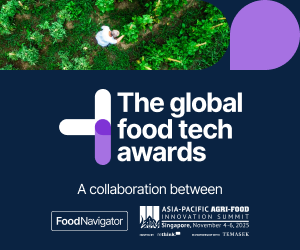
Who’s leading the charge in transforming Asia-Pacific’s future food? Join us for the grand finale of the APAC edition of this year’s Global Food Tech Awards with FoodNavigator as we reveal this year’s winner live on stage, followed by a rapid-fire pitch and Q&A.
-
- What is driving consumer trends and food choices in Asia-Pacific, and how do these insights fuel the innovation pipelines of food and ingredient brands?
- How is indulgence defined across the region, and how are CPGs balancing indulgence with demands for healthier options? What is the role of portion control?
- What part does fortification play in reformulation strategies and product development? As the ‘protein hype’ continues, how are snacking brands incorporating protein into their solutions? What levels of protein hold value, and which formulation challenges must be addressed?
- What does it mean to build a strong consumer brand in a volatile agri-food market? What principles must be at the heart of growth strategies, and what is the role of retailers and retail channels in strengthening brand-consumer relationships?
-
- How are consumer preferences in relation to food and health evolving, and what does this mean for the development of functional foods and beverages? Drawing on new consumer data from Lumina Intelligence, we’ll shed light on the shifts taking place across the food and beverage landscape in Asia-Pacific.
-
- What health and wellbeing priorities influence F&B supporting health longevity? From gut health, immunity, mobility and cardio metabolic health to sleep and stress management, how can food and ingredient brands address consumers’ concerns throughout different life stages?
- What ingredients are driving product development and fortification, and what innovations are emerging? What is the potential of AI-driven peptide discovery in developing new ingredients for specific health and wellbeing outcomes?
- Do traditional ingredients and foods with intrinsic health benefits hold value for functional F&B innovation, and if so, how can they be tailored to mass production?
- How can industry and government ensure the affordability and accessibility of functional foods and beverages in Asia-Pacific? What public-private partnerships and collaborations are driving positive change?
Speakers
-
- Join us for an in-depth analysis of venture capital in the agri-food industry. Expect audience interactivity and fast-paced discussion between prominent investors as they aim to answer the question of whether VC is the right model for agtech and foodtech - while highlighting emerging alternatives.
Speakers
)




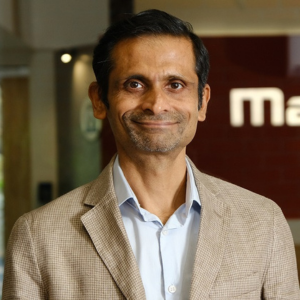























































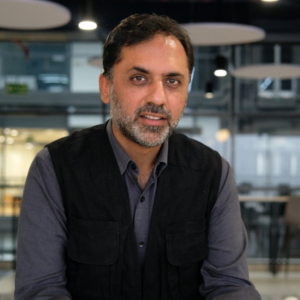

























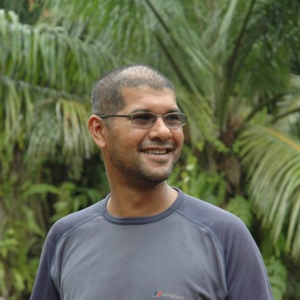


























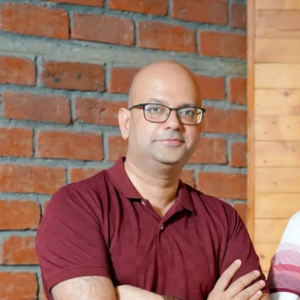
































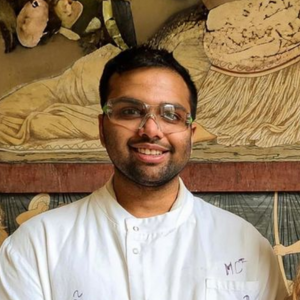
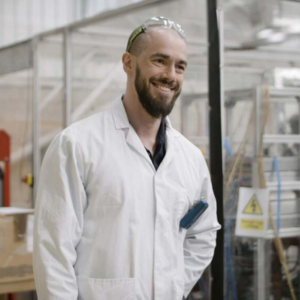

































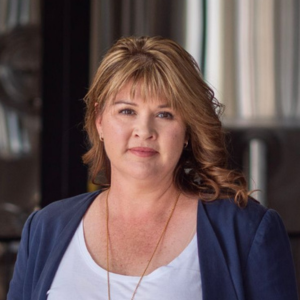










































)
)
)
)
)
)
)
)
)
)
)
)
)
)
)
)
)
)